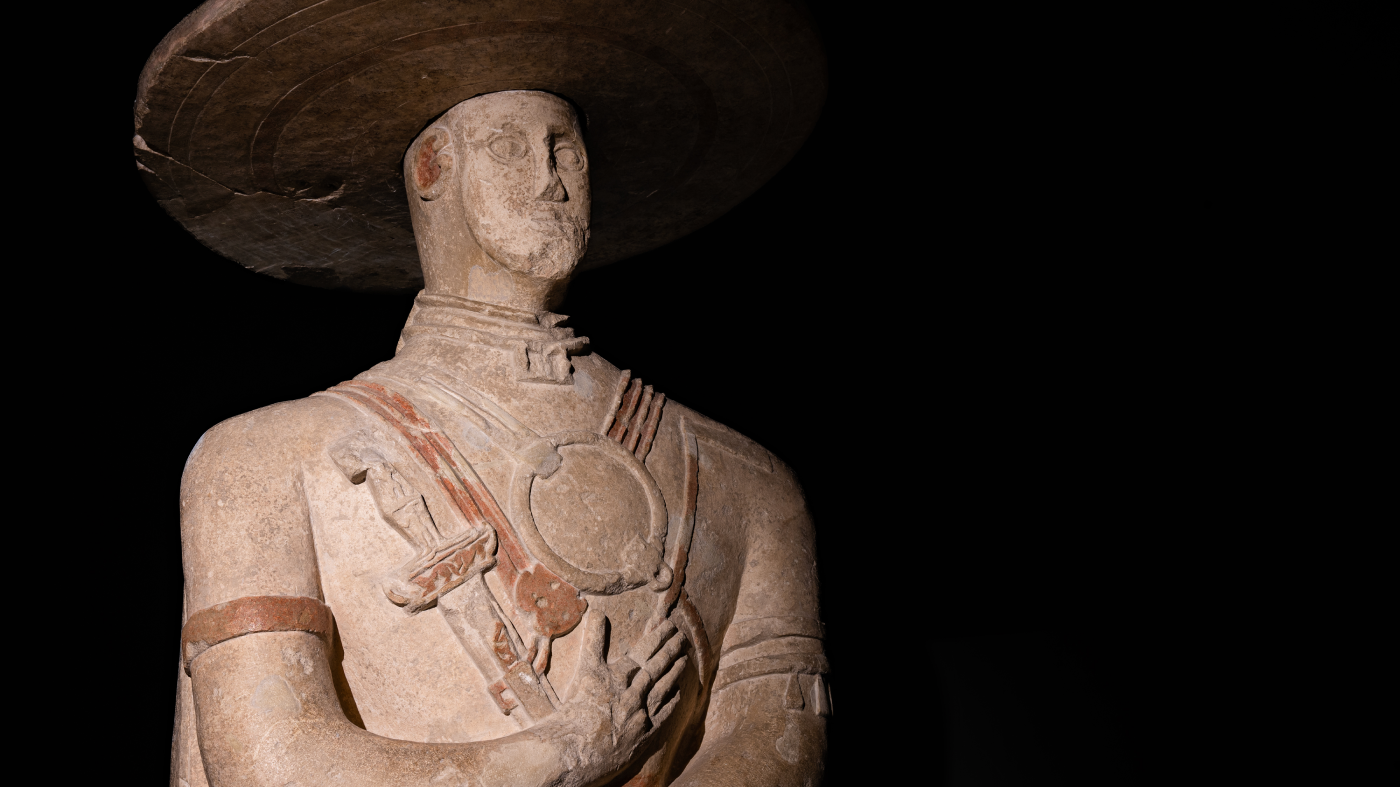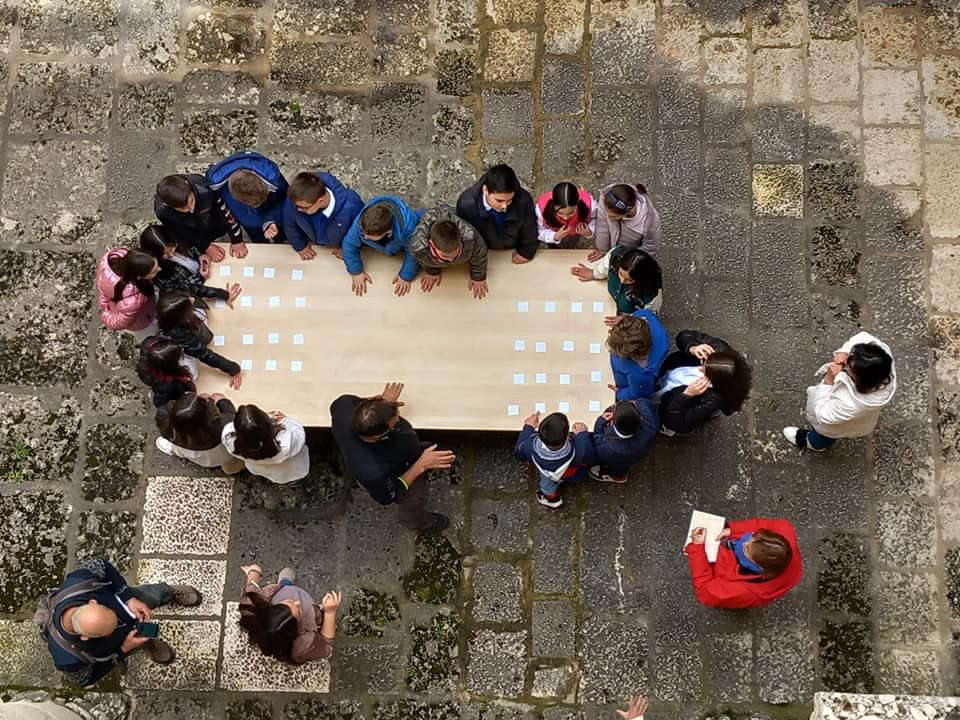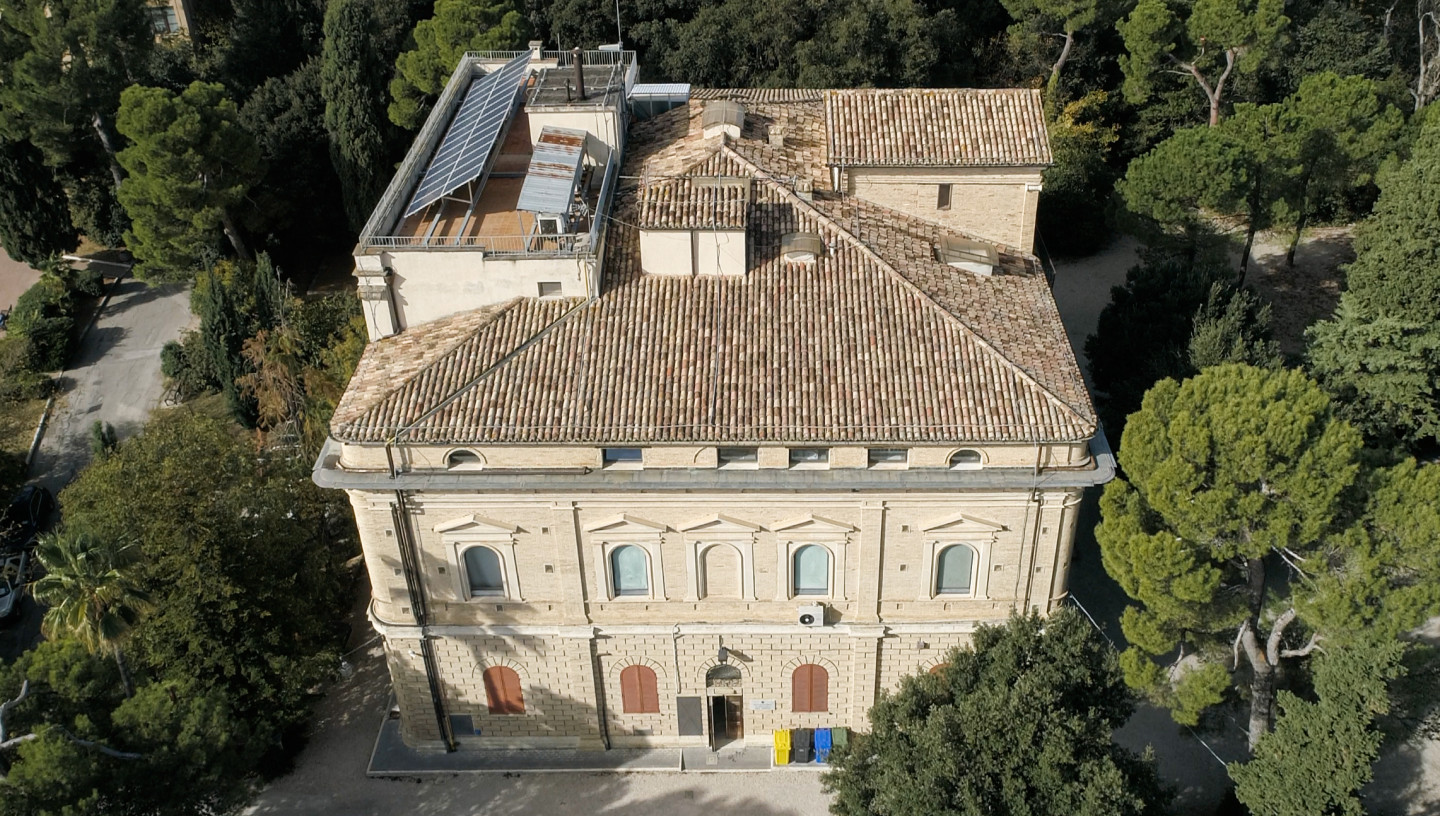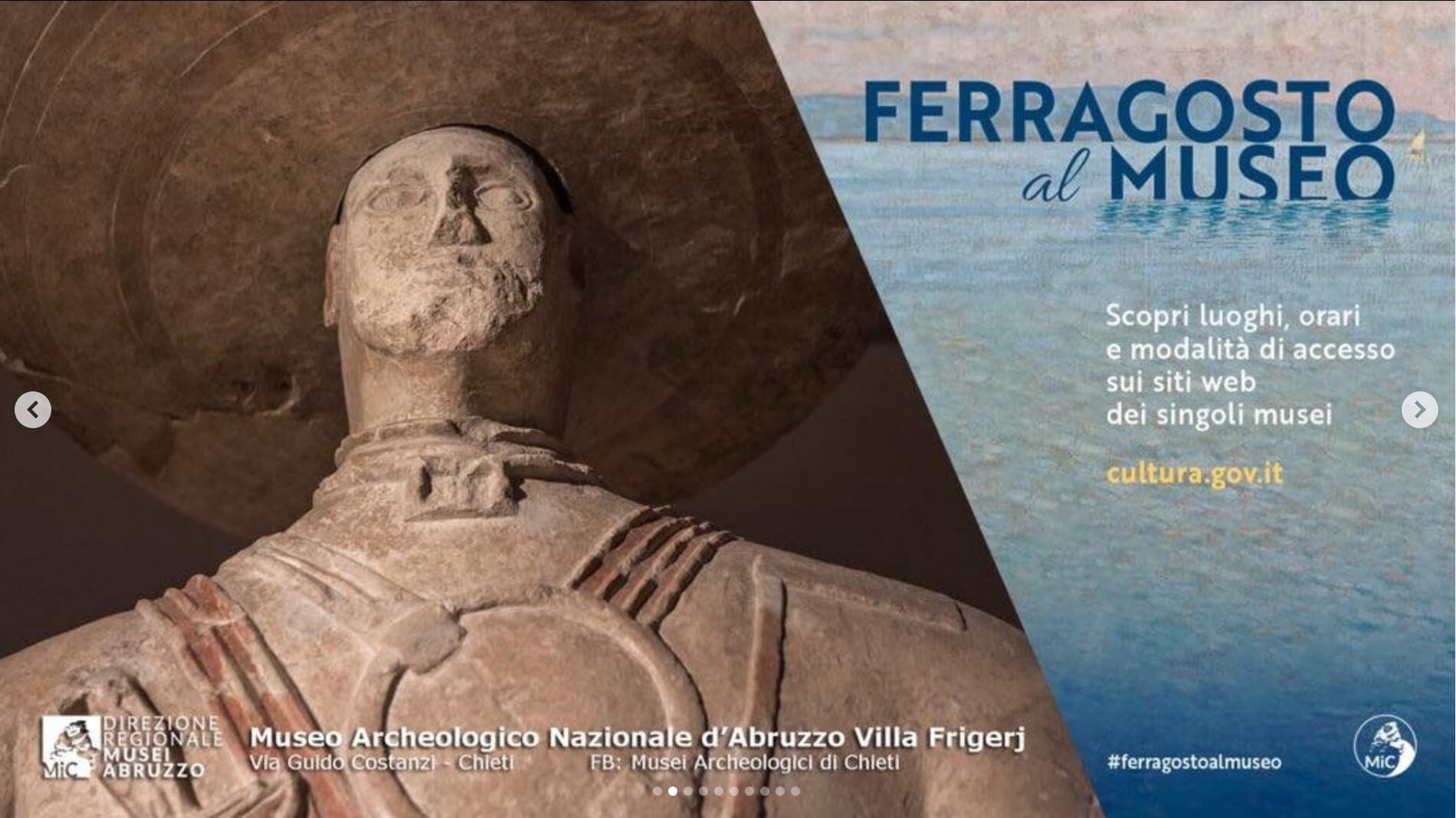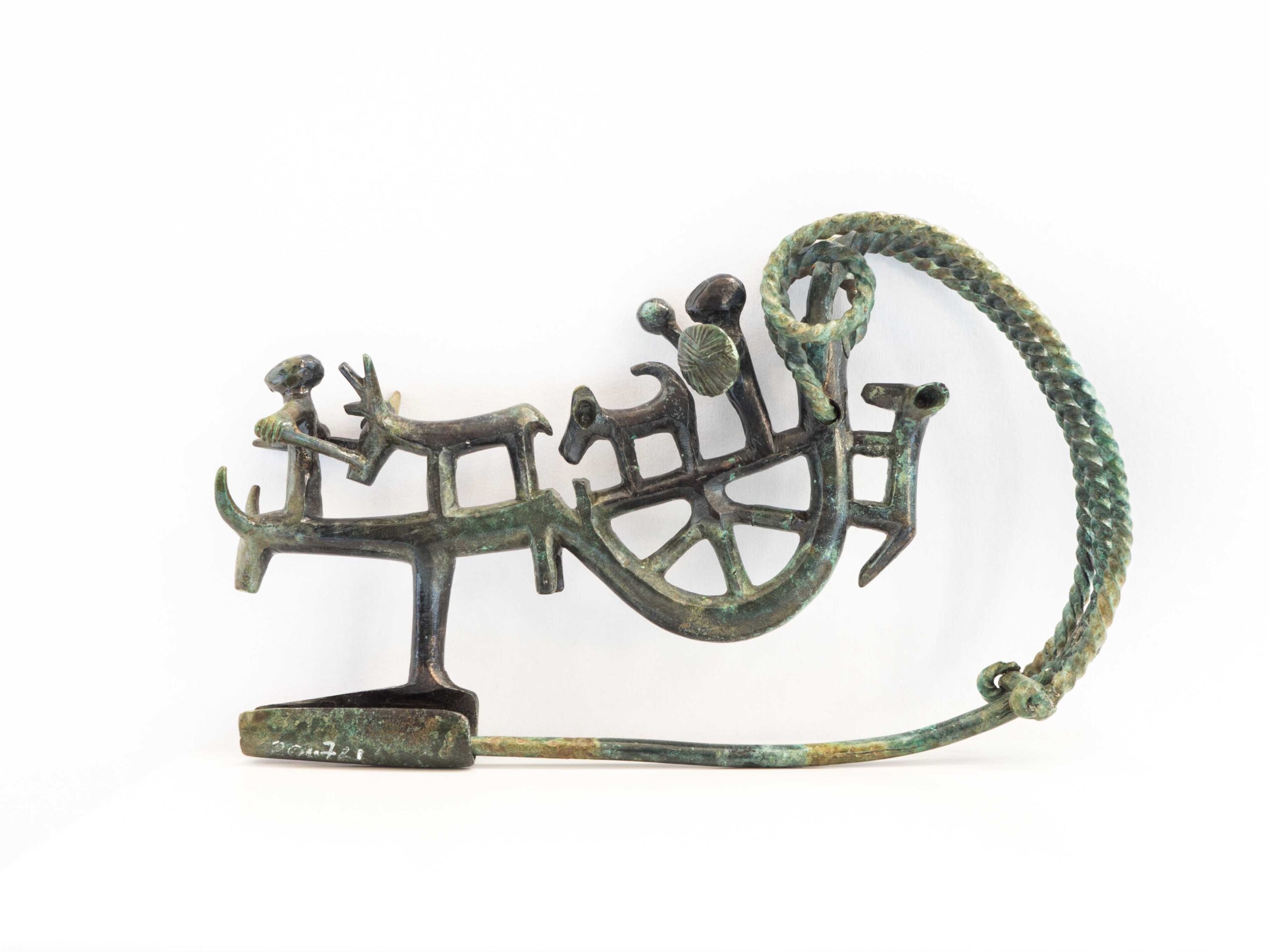ITALIANO
Fibula
Bronzo
VIII secolo a.C.
Pizzoli (L’ Aquila), località Scentelle Capaturo, tomba 45,
La fibula era un indispensabile oggetto del vestiario, utilizzata, in antichità, per fermare gli abiti.
Questa fibula ha un arco configurato, su cui è rappresentato un carro, trainato da un bovide dalle lunghe corna. Sul dorso del bue vi è una figurina umana rappresentata con le gambe separate, le braccia allargate e le mani segnate dall’incisione delle dita: con la destra impugna una corta lancia e con la sinistra guida un cervo adulto con il muso stretto dal laccio. Sul carro si susseguono un cane con le orecchie dritte e la coda rivolta verso il dorso, ed una seconda figura in posizione dominante, con uno scudo decorato e con uno scettro; all’esterno del carro, in verticale sulla parte posteriore della ruota, è raffigurato un altro cane con la coda abbassata. Le figure umane hanno teste massicce, oblunghe, recanti incisioni parallele.
Della rappresentazione sono state date diverse interpretazioni: potrebbe trattarsi di una scena di caccia al cervo, ma il carro trainato dal bue potrebbe anche alludere al viaggio del defunto verso l’oltretomba in una sorta di sfilata cerimoniale con un intento di “eroizzazione” del personaggio. In alternativa, è possibile leggere la scena come un sacrificio in cui il sacerdote scaccia i demoni e i mali percuotendo lo scudo con la mazza.
La fibula in bronzo è stata rinvenuta nella tomba 45, ospitata all’ interno di un grande tumulo funerario. La tomba, maschile in base agli altri oggetti di corredo, doveva appartenere ad una figura eminente della comunità seppellita nella necropoli.
ENGLISH
Fibula (brooch)
Bronze
8th century BC
Scentelle Capaturo, suburbs of Pizzoli (AQ), tomb 45
Fibulae (fibula singular) were brooches used in antiquity for fastening cloth/clothing.
This bronze fibula has a figured arc, in which a cart pulled by a long-horned bovine is depicted. On the bovine’s back there is a small human figure with separated legs, stretched arms and fingers outlined by incised signs. This figurine holds a short spear in his right hand, while his left hand is guiding a deer with the muzzle knotted by a lace. On the cart there is a dog – with straight ears and a tail curving upwards – and a second human figure with a decorated shield and a scepter (or a club) is positioned in the dominant place. On the outside of the cart, near the back of the wheel, there is a second dog with the tail curving downwards. The human figurines have massive, elongated heads, characterized by incised, parallel signs.
The scene represented has various interpretations. It might be a deer-hunting scene, or, because of the presence of the bovine pulling the cart, it could represent the funerary ceremony accompanying the deceased to the underworld. According to a third interpretation, it might be the representation of a sacrifice during which a priest is sending the evils away hitting the shield with the club.
The fibula was found in a tomb (n. 45) inside a large funerary mound. The tomb, according to the other funerary goods recovered, belonged to an eminent man, member of the local community.
